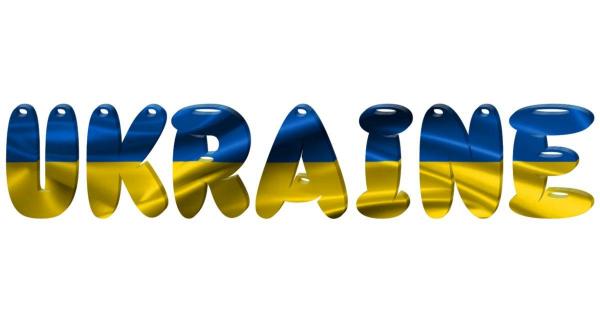
Deutschland: Ausnahmen von Lkw-Fahrverboten
Auf Anfrage des Bundesministeriums für Digitalisierung und Verkehr (BMDV) haben alle Bundesländer Ausnahmen vom Sonn- und Feiertagsfahrverbot eingeführt, die bis zum 26. Juni gelten.
Die Ausnahmen gelten für Transporte, die zur direkten oder indirekten Hilfeleistung für die ukrainische Bevölkerung (einschließlich Leerfahrten) organisiert werden.
Es ist zu beachten, dass das Sonn- und Feiertagsfahrverbot für Busse, die Flüchtlinge aus der Ukraine transportieren, bereits aufgehoben worden ist.
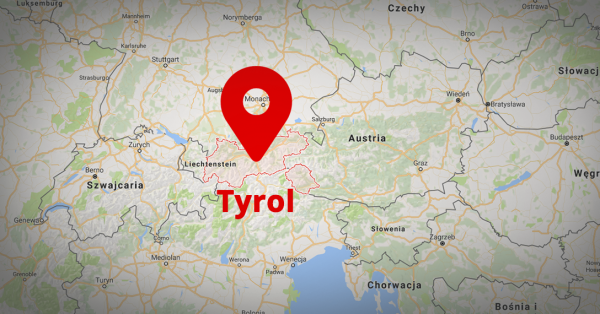
Dosierkalender 2. Halbjahr 2022
Die Tiroler Landesregierung hat für das zweite Halbjahr 2022 Termine veröffentlicht, an denen es wieder zu Anhaltungen im LKW-Verkehr kommen soll. Diese LKW Blockabfertigungen sollen wieder auf der A12 Inntalautobahn im Bereich des Grenzübergangs Kufstein/Kiefersfelden in Fahrtrichtung Süden ab 05:00 Uhr gelten.
„Die letzten dreieinhalb Jahre haben gezeigt, dass die Blockabfertigungen als Lenkungsinstrument zur Aufrechterhaltung der Verkehrs- und Versorgungssicherheit an besonders kritischen Tagen, an denen Überlastungen drohen, für Tirol unverzichtbar sind“, so LH Günther Platter.
Im laufenden Jahr 2022 sind laut Dosierkalender insgesamt 38 Dosiertage vorgesehen: 13 Tage wurden bereits absolviert. Nachfolgend finden Sie eine Liste der bevorstehenden Dosiertage:
– 23. Mai (Montag)
– 24. Mai (Dienstag)
– 25. Mai (Mittwoch)
– 27. Mai (Freitag)
– 3. Juni (Freitag)
– 4. Juni (Samstag)
– 7. Juni (Dienstag)
– 8. Juni (Mittwoch)
– 9. Juni (Donnerstag)
– 13. Juni (Montag)
– 14. Juni (Dienstag)
– 15. Juni (Mittwoch)
– 17. Juni (Freitag).
An den aufgelisteten Tagen wird die Polizei an einem eigens eingerichteten Checkpoint auf der A12 bei Kufstein Nord den Schwerverkehr ab 05.00 Uhr in Fahrtrichtung Innsbruck so verlangsamen und falls nötig zum Stillstand bringen, dass pro Stunde nur etwa 300 Lkw von Deutschland kommend auf der A12 unterwegs sind. Dosiertage im zweiten Halbjahr
– 4. Juli (Montag)
– 11. Juli (Montag)
– 18. Juli (Montag)
– 25. Juli (Montag)
– 4. Oktober (Dienstag)
– 27. Oktober (Donnerstag)
– 2. November (Mittwoch)
– 3. November (Donnerstag)
– 16. November (Mittwoch)
– 17. November (Donnerstag)
– 23. November (Mittwoch)
– 24. November (Donnerstag)
– 30. November (Mittwoch)
– 1. Dezember (Donnerstag)
– 9. Dezember (Freitag)
– 13. Dezember (Dienstag)
– 14. Dezember (Mittwoch).

The calendar of HGV traffic restrictions for the second half of 2022
The Tyrolean state government has published dates in the second half of 2022 when the number of lorries passing the German-Austrian border will be limited. The measure applies to southbound lorries travelling on the A12 Inntal motorway towards the Kufstein/Kiefersfelden border crossing.
“The last three and a half years have shown that the measure limiting the number of trucks passing the German-Austrian border is indispensable for Tyrol as a way of maintaining traffic flow and ensuring supply security on particularly critical days when there is a risk of congestion” says Governor Günther Platter.
A total 38 days have been planned for 2022: the measure has already been implemented on 13 days. Below is a list of upcoming days:
– May 23 (Monday)
– May 24 (Tuesday)
– May 25 (Wednesday)
– May 27 (Friday)
– June 3 (Friday)
– June 4th (Saturday)
– June 7 (Tuesday)
– June 8 (Wednesday)
– June 9 (Thursday)
– June 13 (Monday)
– June 14 (Tuesday)
– June 15 (Wednesday)
– June 17 (Friday).
On these days, the police will slow down HGV traffic at a specially created checkpoint on the A12 in the direction of Innsbruck near Kufstein Nord from 5 a.m. and, if necessary, bring it to a standstill so that only around 300 trucks from Germany can travel along the A12 per hour. The calendar for the second half of 2022
– July 4th (Monday)
– July 11 (Monday)
– July 18 (Monday)
– July 25 (Monday)
– 4 October (Tuesday)
– 27 October (Thursday)
– November 2nd (Wednesday)
– 3 November (Thursday)
– November 16 (Wednesday)
– November 17 (Thursday)
– November 23 (Wednesday)
– 24 November (Thursday)
– November 30 (Wednesday)
– December 1st (Thursday)
– December 9 (Friday)
– December 13 (Tuesday)
– December 14 (Wednesday).
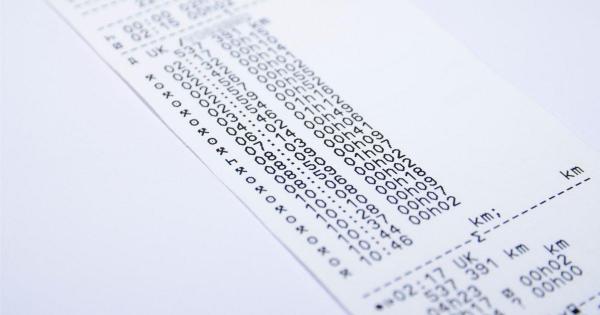
Derogations from the provisions of Regulation 561/2006
The derogations have been granted by Spain, Romania, Italy, Poland, Denmark and Germany in connection with the war in Ukraine.
In all of the following cases, the derogations apply to humanitarian shipments.
Denmark – as a result of the war in Ukraine, many HGV drivers are trying to help Ukrainian refugees. The Danish government has therefore decided to grant derogations from the rules on driving and rest times for lorry drivers and hauliers who are delivering goods to those in need.
Spain – The Ministry of Transport has introduced measures for freight and passenger transport with humanitarian aid for Ukraine. They only apply to non-commercial transport operations.
Poland – the derogations are in effect until April 2. Drivers are obliged to specify on the back of their tachograph charts or printouts from a digital tachograph the reasons why they are exceeding the normally permitted limits.
Romania – the derogations are on eefct for a period of 30 days from March 15 to April 13.
Italy – In order to facilitate humanitarian aid for Ukraine, the Italian Directorate for Road Safety and Road Transport issued a note on March 11, which explains two important points: driving and rest times, and permits for international transport of goods and passengers.
Germany – vehicles, including those used for the non-commercial transport of humanitarian aid – used in crisis situations or rescue operations are exempt from the obligation to follow the rules regarding driving and rest times. It is important that drivers always check if all preconditions for this derogation are met. In particular one needs to establish whether a particular journey cannot take place without any delays by the need to comply with required rest times. The derogation may only be used on the condition that it does not impair road safety.

Ausnahmen von den Bestimmungen der Verordnung 561/2006
Die Ausnahmeregelungen sind von Spanien, Rumänien, Italien, Polen, Dänemark und Deutschland im Zusammenhang mit dem Krieg in der Ukraine gewährt worden.
In allen folgenden Fällen gelten die Ausnahmen für humanitäre Transporte.
Dänemark – Als Folge des Krieges in der Ukraine versuchen viele Lkw-Fahrer, ukrainischen Flüchtlingen zu helfen. Die dänische Regierung hat daher beschlossen, Lkw-Fahrern und Spediteuren, die Waren an Bedürftige liefern, Ausnahmen von den Lenk- und Ruhezeiten zu gewähren.
Spanien – Das Verkehrsministerium hat Maßnahmen für den Güter- und Personenverkehr mit humanitärer Hilfe für die Ukraine eingeführt. Sie gelten nur für nichtgewerbliche Transporte.
Polen – Die Ausnahmen gelten bis zum 2. April. Lkw-Fahrer sind verpflichtet, auf der Rückseite ihrer Fahrtenschreibertafeln oder Ausdrucke eines digitalen Fahrtenschreibers die Gründe für die Überschreitung der normalerweise zulässigen Grenzwerte anzugeben.
Rumänien – Die Ausnahmeregelungen gelten für einen Zeitraum von 30 Tagen vom 15. März bis 13. April.
Italien – Um die humanitäre Hilfe für die Ukraine zu erleichtern, hat die italienische Direktion für Straßenverkehrssicherheit und Straßentransport am 11. März eine Mitteilung herausgegeben, in der zwei wichtige Punkte erläutert werden: Lenk- und Ruhezeiten sowie Genehmigungen für den internationalen Waren- und Personentransport.
Deutschland – Fahrzeuge, einschließlich Fahrzeuge, die für nichtgewerbliche Transporte für humanitäre Hilfe verwendet werden, die in Notfällen oder bei Rettungsmaßnahmen verwendet werden, sind von der Pflicht zur Einhaltung der Lenk- und Ruhezeiten ausgenommen. Es ist wichtig, dass die Fahrer immer prüfen, ob alle Voraussetzungen für diese Ausnahmeregelung erfüllt sind. Insbesondere ist festzustellen, ob eine bestimmte Fahrt durch die Einhaltung der vorgeschriebenen Ruhezeiten nicht verzögerungsfrei erfolgen kann. Dabei ist zu beachten, dass eine Ausnahme ausschließlich unter der Voraussetzung in Anspruch genommen werden darf, dass durch deren Inanspruchnahme die Verkehrssicherheit nicht beeinträchtigt wird.
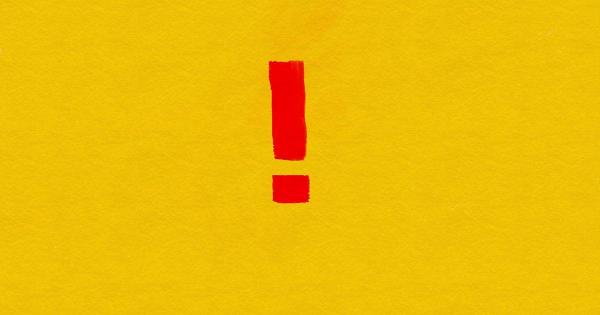
Germany: Weekend closure of A43 near Herne
Deutsche Bahn is rebuilding its bridge over the A43 south of the Herne junction. This will require multiple full closures of the Westphalia autobahn in the coming months.
– During the weekend from 9 p.m. on Friday (April 1) to 5 a.m on Monday (April 4) girders for the new bridge will be laid. During this time, the A43 will be completely closed in the direction of Münster between Herne-Eickel and the Recklinghausen junction. The closure will also affect the roads connecting to the A42 in both directions at Kreuz Herne, i.e. the parallel lane starting from Herne-Eickel. Diversions for trasit traffic lead via the A40 and the A45.
– Cranger Strasse above the motorway also needs to be completely closed during this time. Depending on the direction of travel, inner-city diversions lead along Forellstrasse, Westring, Rottbruchstrasse, Holsterhauser Strasse or Dorstener Strasse.
Work on the bridge will continue in the following weeks and months:
– On Saturday (30 April) the new superstructure above the exit will be concreted. For this reason, the A43 in the direction of Münster will be closed from 4 a.m. to 8 p.m., as will the connections to the A42.
– On the weekend from Friday (1 July) from 9 p.m. to Monday (4 July) at 5 a.m. the shoring will be dismantled. Here, too, the lane towards Münster and the connections will be completely closed.
– At the weekend, from 9 p.m. on Friday (23 September) to 5 a.m on Monday (26 September), traffic in both directions on the A43 between the Herne and Herne-Eickel junctions will be completely closed, as will the connections to the junction. If one of the work stages cannot be carried out as scheduled, the work will be postponed and an alternative date in October will be set.
– The final work will take place in February 2023. On the weekend from 9 p.m on Friday (February 10) to Monday (13 February), the motorway will be closed again in both directions, including the connections in order to demolish the remains of the old bridge.

Deutschland: Wochenend-Vollsperrung bei Herne für Neubau einer Bahnbrücke über die A43
Die Deutsche Bahn baut ihre Brücke über die A43 südlich des Kreuzes Herne neu. Dafür sind in den kommenden Monaten mehrfach Vollsperrungen durch die Autobahn Westfalen notwendig.
– Am Wochenende von Freitag (1.4.) ab 21 Uhr bis Montag (4.4.) um 5 Uhr werden die Träger für die Brücke aufgelegt. Die A43 ist in dieser Zeit in Fahrtrichtung Münster zwischen Herne-Eickel und dem Kreuz Recklinghausen voll gesperrt. Davon sind auch im Kreuz Herne die Verbindungen zur A42 in beide Fahrtrichtungen betroffen, also die Parallelspur ab Herne-Eickel. Großräumige Umleitungen führen über die A40 und die A45.
– Zudem muss zu diesen Zeiten auch die Cranger Straße über der Autobahn voll gesperrt werden. Die innerstädtischen Umleitungen führen je nach Fahrtrichtung weiträumig über die Straßen Forellstraße, Westring, Rottbruchstraße, Holsterhauser Straße oder Dorstener Straße.
In den folgenden Wochen und Monaten werden die Arbeiten an der Brücke fortgesetzt:
– Am Samstag (30.4.) wird der neue Überbau über der Ausfahrt betoniert. Deswegen wird von 4 bis 20 Uhr die A43 in Richtung Münster gesperrt, auch die Verbindungen zur A42 sind erneut betroffen.
– am Wochenende von Freitag (1.7.) ab 21 Uhr bis Montag (4.7.) um 5 Uhr wird das Traggerüst demontiert. Auch hier werden die Fahrbahn Richtung Münster und die Verbindungen voll gesperrt.
– Am Wochenende von Freitag (23.9.) ab 21 Uhr bis Montag (26.9.) um 5 Uhr sind daher beide Fahrtrichtungen der A43 zwischen dem Kreuz Herne und Herne-Eickel voll gesperrt, ebenso wie die Verbindungen zum Kreuz. Sollte einer der Arbeitsschritte nicht am angestrebten Termin durchgeführt werden können, werden die Arbeiten entsprechend verschoben und ein Ausweichtermin im Oktober genutzt.
– Die finalen Arbeiten finden im Februar 2023 statt. Am Wochenende von Freitag (10.2.) ab 21 Uhr bis Montag (13.2.) wird die Autobahn noch einmal in beiden Fahrtrichtungen gesperrt, inklusive der Verbindungen. Dann werden die Reste der alten Brücke abgerissen.
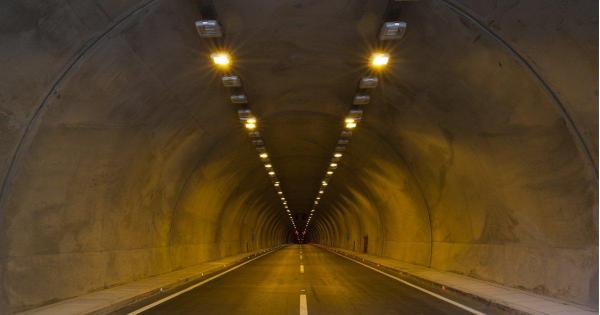
Slowakei: Vollsperrungen von Tunneln
Im April, Mai und Juni werden in den unterirdischen Tunneln von Sitina, Horelica, Šibenik, Považský Chlmec, Bôrik, Prešov, Žilina, Ovčiarsko, Branisko, Svrčinovec, Polana und Lučivná regelmäßige Frühjahrswartungs- und Inspektionsarbeiten durchgeführt.
Der Verkehr wird auf parallel verlaufende Straßen umgeleitet. Die Vollsperrung der Tunnel wird an folgenden Tagen erwartet:
SITINA-Tunnel
• von 10:00 Uhr am 1. April bis 10:00 Uhr am 2. April
• von 22:00 Uhr am 2. April bis 10:00 Uhr am 3. April
• von 22:00 Uhr am 3. April bis 4:00 Uhr am 4. April
• von 22:00 Uhr am 8. April bis 10:00 Uhr am 9. April
• von 22:00 Uhr am 9. April bis 10:00 Uhr am 10. April (Reservierung)
HORELICA-Tunnel
• von 22:00 Uhr am 8. April bis 22:00 Uhr am 10. April
ŠIBENIK-Tunnel
• 22. April 22:00 Uhr bis 23. April 16:00 Uhr (nur die linke Tunnelröhre in Richtung Žilina)
• von 00:00 Uhr am 23. April bis 18:00 Uhr am 24. April (nur die rechte Tunnelröhre Richtung Prešov)
POVAŽSKÝ CHLMEC-Tunnel
• vom 28. April um 12:00 Uhr bis zum 1. Mai um 22:00 Uhr
BÔRIK-Tunnel
• 6. Mai 22:00 Uhr bis 7. Mai 18:00 Uhr (nur die linke Tunnelröhre in Richtung Žilina)
• 7. Mai 00:00 Uhr bis 9. Mai 18:00 Uhr (nur die rechte Tunnelröhre in Richtung Prešov)
PREŠOV-Tunnel
• 13. Mai, 22:00 Uhr, bis 20. Mai, 10:00 Uhr (nur die linke Tunnelröhre in Richtung Žilina)
• 14. Mai 00:00 Uhr bis 20. Mai 12:00 Uhr (nur die rechte Tunnelröhre in Richtung Košice)
Tunnel ŽILINA und OVČIARSKO
• von 12:00 Uhr am 18. Mai bis 22:00 Uhr am 22. Mai
BRANISKO-Tunnel
• von 00:00 Uhr am 21. Mai bis 18:00 Uhr am 27. Mai
Tunnel SVRČINOVEC und POLANA
• vom 27. Mai um 22:00 Uhr bis zum 29. Mai um 22:00 Uhr
Unterirdische Passage Lučivná
• am 25. Juni von 08:00 bis 18:00 Uhr (die linke Tunnelröhre in Richtung Žilina)
• 26. Juni von 08:00 bis 18:00 Uhr (die rechte Tunnelröhre Richtung Košice)

Slovakia: complete closures of tunnels
In April, May and June, regular spring maintenance and inspection work will be carried out in the undergound tunnels of Sitina, Horelica, Šibenik, Považský Chlmec, Bôrik, Prešov, Žilina, Ovčiarsko, Branisko, Svrčinovec, Polana, and Lučivná.
Traffic will be diverted to parallel roads. The complete closure of the tunnels is expected on the following days:
SITINA tunnel
• from 10:00 PM on April 1 to 10:00 AM on April 2
• from 10:00 PM on April 2 to 10:00 AM on April 3
• from 10:00 PM on April 3 to 4:00 AM on April 4
• from 10:00 PM on April 8 to 10:00 AM on April 9
• from 10:00 PM on April 9 to 10:00 AM on April 10 (reservation)
HORELICA tunnel
• from 10:00 PM on April 8 to 10:00 PM on April 10
ŠIBENIK tunnel
• from 10:00 PM on 22 April to 4:00 PM on 23 April (only the left tunnel tube towards Žilina)
• from 00:00 on 23 April to 6:00 PM on 24 April (only the right tunnel tube towards Prešov)
POVAŽSKÝ CHLMEC tunnel
• from 12:00 on April 28 to 10:00 PM on May 1
BÔRIK tunnel
• from 10:00 PM on May 6 to 6:00 PM on May 7 (only the left tunnel tube towards Žilina)
• from 00:00 on May 7 to 6:00 PM on May 9 (only the right tunnel tube towards Prešov)
PREŠOV tunnel
• from 10:00 PM on May 13 to 10:00 AM on May 20 (only the left tunnel tube towards Žilina)
• from 00:00 on May 14 to 12:00 on May 20 (only the right tunnel tube towards Košice)
ŽILINA and OVČIARSKO tunnels
• from 12:00 on May 18 to 10:00 PM on May 22
BRANISKO tunnel
• from 00:00 on May 21 to 6:00 PM on May 27
SVRČINOVEC and POLANA tunnels
• from 10:00 PM on May 27 to 10:00 PM on May 29
Lučivná underground passage
• from 08:00 AM to 6:00 PM on June 25 (the left tunnel tube towards Žilina)
• from 08:00 AM to 6:00 PM on June 26 (the right tunnel tube towards Košice)
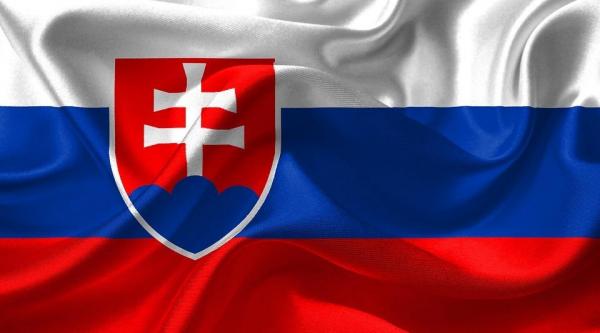
Slovakia lifts holiday HGV driving bans
In view of the upcoming public holidays, the Presidium of the Police of the Slovak Republic has granted a general exemption from the HGV driving ban on the 15th and 18th of April.
The exemption applies to all heavy goods vehicles traveling along motorways, roads for motor vehicles, first class roads and roads with international traffic, arriving in Slovakia from some neighboring countries and heading for destinations (e.g. company headquarters or place of unloading) located within Slovakia.